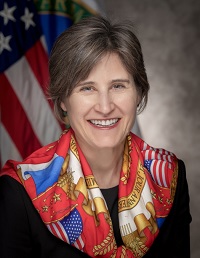
By AI Trends Staff
The federal government’s investments in AI since President Donald Trump signed an Executive Order calling for the US to maintain its leadership in AI in early 2019 have been substantial and are playing out in a range of agencies, as several speakers outlined on day two of the Second Annual AI World Government conference and expo held virtually this week.

Erwin Gianchandani, Deputy Assistant Director, Computer and Information Science and Engineering, National Science Foundation, described NSF investments in AI, NSF’s National AI Research Institutes and other partnership models. The NSF invested $500 million in AI in fiscal year 2020 just ended, broken down by $320 million in computer and information science, $131 million in engineering and $48 million in math and physical sciences. “We put a spotlight on specific areas of AI and machine learning, often in collaboration with partners,” he said in a talk on AI at the NSF. As an example, he pointed to a $4.5 million investment in Partnership on AI, a nonprofit coalition committed to the responsible use of AI, to help research the social challenges that can arise from AI.
Another example is the Real-Time Machine Learning program in partnership with the Defense Advanced Research Projects Agency (DARPA), to build new hardware and software systems that can combine complex ML algorithms and advanced hardware to stream new data in real time. Yet another is a program on Fairness in AI in collaboration with Amazon, with a focus on transparency, explainability and bias. “This illustrates the breadth of investment we have and how we have worked across government agencies and the public and private sectors,” Gianchandani said.
Funding of some $180 million for a new round of AI Research Institutes is coming in 2021, building on $1 billion in awards given this summer to 12 institutes nationwide, and partnering with Amazon, Google, Intel, and Accenture for support.

Over 600 AI projects are underway at the Department of Energy, said Cheryl Ingstad, Director of the AI and Technology Office of the DOE, in a talk outlining the agency’s AI efforts. Appointed in February and from a background at 3M and in the Defense Intelligence Agency before that, Ingstad said, “The DOE is positioned to lead the government’s efforts to advance AI.”
One example effort is the First Give Consortium, announced in August in partnership with Microsoft, to use deep learning algorithms to provide near real-time data to improve the decision-making of the nation’s first responders. “The power to save lives is where I see a great opportunity for AI,” Ingstad said.
The DOE’s strategic objectives in AI include an effort to cultivate an “AI-Ready Workforce” by offering new hires AI career pathways and helping meet the demand for AI training. “We have a lot of passion about this, and we are hiring to execute on this strategy,” she said. “I am impressed with the talent we are seeing.” The DOE is also actively seeking partnerships with AI firms. Ingstad provided an email address for interested partners to send queries or proposals: doe_AI_gateway@hq.doe.gov.
Amazon launched Amazon Web Services in 2006, the first cloud computing platform. With the COVID-19 pandemic causing a boom in remote work, Amazon is well-positioned to be of service. “We are experiencing a renaissance in machine learning and AI in the cloud,” said David Levy, a VP at AWS who focuses on the US Government sector, in a talk on how the government is using AI in the cloud. “The cloud is providing computer scientists with the scale they need to run machine learning algorithms. And COVID-19 research shows the importance of being able to run ML models in the cloud,” he said. Amazon is a cofounding member of the recently-formed COVID-19 High Performance Computing Consortium along with many other industry players, federal agencies, and universities.
The US Department of Veterans Affairs late last year launched the National AI Institute for advancing the health and well-being of veterans. “The VA has over nine million patients, making it the largest integrated healthcare system in the US,” said Gil Alterovitz, PhD, Director of AI at the VA, in a talk on how the agency is using AI to improve health services.
The VA’s chief areas of AI concentration are deep learning, explainable AI, privacy protection, trustworthy AI and multiscale AI analysis, he said. A number of stakeholders are consulted to decide what projects to pursue. The VA uses AI Tech Sprints, time-limited engagements to foster collaboration with industry, academic and nonprofit partners. The first was conducted in 2019; the second concludes in November. “The Tech Sprints enable the VA to have a bidirectional link between the government and users of data,” he said.
One example result is the Clinical Trial Selector, developed by a group of high school students from Fairfax County Va., to help connect veterans with clinical trials that could be helpful. The students were members of the Girls Computing League nonprofit that fosters the interest of young people in computer science and technology. The work is continuing through a grant from AWS.
Day three of AI World Government continues tomorrow, Friday, Oct. 30.



